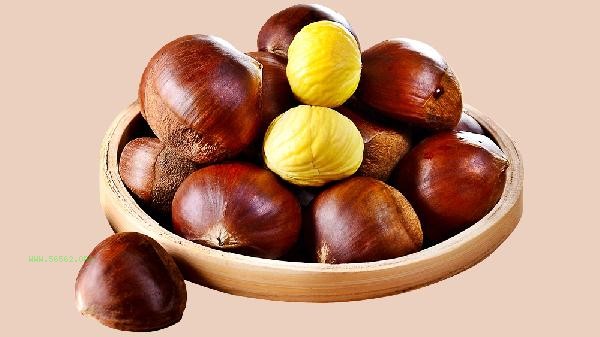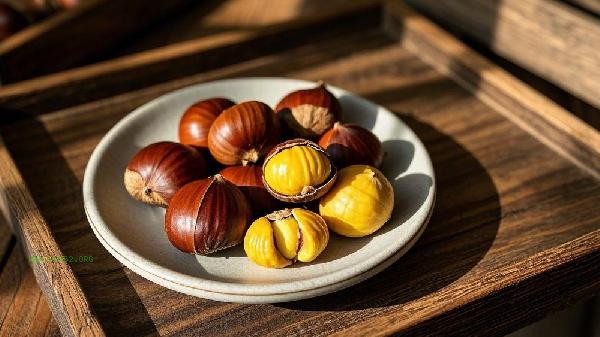Mastering the heat and pre-treatment techniques when cooking chestnuts can make them taste sweet and easy to separate from the skin. There are mainly five methods: incision soaking method, cold water boiling method, salt boiling method, microwave-assisted method, and oven baking method.

1. Cut soaking method
Use a knife to make a cross shaped cut on the convex surface of the chestnut, with a depth suitable for cutting the shell without damaging the flesh. Soak the sliced chestnuts in warm water for half an hour. After the shell absorbs water, it expands and softens, making it easier for heat to penetrate into the interior during cooking. After boiling, reduce the heat to low and simmer for 15 minutes. Turn off the heat and let it simmer for 5 minutes. The outer shell will naturally crack along the cut. This method can maintain the complete shape of chestnuts and avoid them from being cooked to perfection.
2. Cold Water Boiling Method
Untreated raw chestnuts are directly placed in cold water, with the water level completely submerged above the chestnuts. After boiling on high heat, immediately reduce the heat and simmer slowly for 20 minutes. Use the process of slowly increasing water temperature to gradually loosen the outer shell and inner membrane. This method is suitable for small oil chestnuts with uniform size. During the cooking process, gently shake the pot to help heat evenly. After cooking, peel the skin while it is hot, and the inner film will reattach after cooling.
3. Salt Boiling Method
Add 5 grams of salt to every 500 grams of water. After the water boils, add chestnuts and cook for 10 minutes. Salt can alter the fiber structure of the fruit shell, making it more brittle, hard, and fragile, while promoting starch gelatinization of the flesh and increasing sweetness. Please note that the cooking time should not be too long, otherwise the flesh will become too soft. After fishing out, you can wrap it in a towel and gently rub it. Friction with salt particles can help with peeling.

4. Microwave assisted method
Spread chestnuts flat in a microwave container and spray a small amount of water on the surface. After heating on high heat for 2 minutes, the outer shell may develop micro cracks due to internal steam pressure. Boil in boiling water for another 8 minutes to easily peel off. This method is particularly suitable for quick processing of small amounts, but it should be noted that prolonged microwave time can cause the flesh to dehydrate and harden.
Fifth, Oven Baking Method
Preheat the oven at 180 degrees and place the cut chestnuts on a baking tray to bake for 15 minutes. The high temperature causes the water inside the shell to vaporize, creating pressure that naturally opens up cracks in the outer shell. After baking, the chestnut has a stronger aroma and the inner layer is less likely to remain when peeling. You can shorten the boiling time by first grilling and then boiling, or directly grilling and cooking for consumption, but be careful to observe and prevent burning.

Fresh chestnuts contain a lot of tannic acid. It is recommended to soak them in light salt water for 2 hours before cooking to remove astringency. When selecting, choose plump fruits with a shiny brown red outer shell and no empty noise when shaking. When storing, ensure ventilation and prevent mold damage. Chestnuts are rich in B vitamins and minerals, but their starch content is high. People with diabetes should control their consumption. After removing the shell, it can be used to make delicious dishes such as chestnut stewed chicken and chestnut steamed buns. Freezing the remaining ripe chestnuts can extend their shelf life. If the flesh turns black or has a moldy smell when consumed, it should be discarded immediately.








Comments (0)
Leave a Comment
No comments yet
Be the first to share your thoughts!